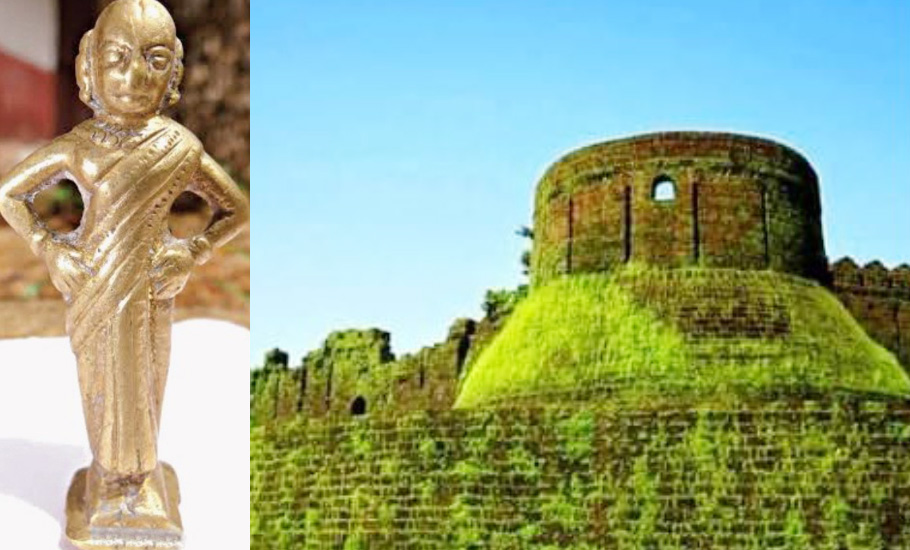
- Home
- India
- World
- Premium
- THE FEDERAL SPECIAL
- Analysis
- States
- Perspective
- Videos
- Sports
- Education
- Entertainment
- Elections
- Features
- Health
- Business
- Series
- In memoriam: Sheikh Mujibur Rahman
- Bishnoi's Men
- NEET TANGLE
- Economy Series
- Earth Day
- Kashmir’s Frozen Turbulence
- India@75
- The legend of Ramjanmabhoomi
- Liberalisation@30
- How to tame a dragon
- Celebrating biodiversity
- Farm Matters
- 50 days of solitude
- Bringing Migrants Home
- Budget 2020
- Jharkhand Votes
- The Federal Investigates
- The Federal Impact
- Vanishing Sand
- Gandhi @ 150
- Andhra Today
- Field report
- Operation Gulmarg
- Pandemic @1 Mn in India
- The Federal Year-End
- The Zero Year
- Science
- Brand studio
- Newsletter
- Elections 2024
- Events
- Home
- IndiaIndia
- World
- Analysis
- StatesStates
- PerspectivePerspective
- VideosVideos
- Sports
- Education
- Entertainment
- ElectionsElections
- Features
- Health
- BusinessBusiness
- Premium
- Loading...
Premium - Events

Why BJP wants to immortalise the ‘Queen of Pepper’ in Karnataka

“We must deal with her most carefully and diplomatically. We must be courteous, polite and diplomatic to win her to our side.” So goes a 1591 CE Portuguese record about a queen whose kingdom stood on the banks of the Sharavathi river in Uttara Kannada district. Many centuries later, the Karnataka BJP has decided to “win to their side” the same queen. With eyes clearly set on the...
“We must deal with her most carefully and diplomatically. We must be courteous, polite and diplomatic to win her to our side.”
So goes a 1591 CE Portuguese record about a queen whose kingdom stood on the banks of the Sharavathi river in Uttara Kannada district. Many centuries later, the Karnataka BJP has decided to “win to their side” the same queen.
With eyes clearly set on the upcoming state elections, as Chief Minister Basavaraj Somappa Bommai presented the ₹3.09-lakh crore Karnataka budget for 2023-24, he announced an allocation of ₹8.5 crore for a memorial park in honour of Rani Chennabhairadevi, a contemporary of the Queen of England and in many respects her equal.
A follower of Jain faith, Rani Chennabhairadevi boldly handled the many challenges she faced through thought-through alliances and managed to rule her kingdom efficiently for more than 50 years without relinquishing her political, cultural or economic supremacy. She also managed to defeat the Portuguese, not once but twice, when they made attempts to take over the ports and trading activities of her territory.
Born in 1536 AD in Hadavalli, North Kanara, she ruled a part of the Saluva dynasty —Gerusoppa to Nagire — in the 15th and 16th centuries. Her administrative sphere covered the present coastal districts of North Kanara, Udupi and Shivamogga districts and parts of south Goa, before passing away in 1606 AD at the age of 70.

While many know the queen today for her valour, it is her business acumen which earned her the title of ‘Queen of Pepper’. She exported large quantities of pepper and other spices to European and Arab regions through the ports of Bhatkala and Honnavar. Interestingly, Chennabhairadevi was also known as the ‘Queen of Geranium’ because she imported geranium flowers and seeds from western countries to India.
Unfortunately, despite the exemplary valour she displayed and the business sense she showed, Chennabhairadevi remained unknown to much of India beyond Karnataka. What brought her back into reckoning, interestingly, was a work of fiction. While the local people would often discuss the queen’s contributions and legends, the story of Rani Chennabhairadevi began to be discussed in political circles after Gajanana Sharma tried to immortalise her valour and ingenuity in her novel named after the Rani — Chennabhairadevi.
Now, with elections in sight, the BJP has decided to ‘immortalise’ Chennabhairadevi’s greatness in order to woo the Jain voters. The move is part of the party’s efforts to reach out to different communities and castes and consolidate its vote base. The recent efforts to appropriate the legacy of Sangolli Rayanna from the Kuruba community, Maharshi Valmiki from the Nayak Community and Kempe Gowda from the Vokkaliga community are all aimed at consolidating the vote base.
Chennabhairadevi, on her part, is an icon of the Jain community, whose members are spread across several districts of Karnataka as they once ruled the very same regions in present-day Karnataka.
The choice of Chennabhairadevi to honour the contribution of Jains in Karnataka couldn’t have been more apt. Her victories against the Portuguese in 1559 and 1570 and successful rule of more than 50 years is a record when compared to most kings and queens.
Around 4 lakh Jains live in Karnataka and are spread all over the state. Politically, the community does not have allegiance to any particular party and does not vote as one block and so their votes are up for grabs currently. Sensing this, the BJP recently made Veerendra Heggade, who is a Jain and the hereditary administrator of the Dharmasthala Temple, a Rajya Sabha MP.
When it comes to Chennabhairadevi, the BJP is projecting her as a symbol of ‘nationalism’ for her resistance against the Portuguese. Her nationalism has recently been spoken about at workshops organised by the Rashtriya Swayamsevak Sangh (RSS) and its affiliated organisations.
Many say the BJP did not remember the queen till Sharma wrote Chennabhairadevi. A picture postcard dedicated to the queen was released by the Mangalore Postal Division during Kannada Rajyotsava in 2022.
In 2023, the Chennabhairadevi Memorial Park will be built in Honnavar to immortalise Chennabhairadevi, who joins the ranks of Kittur Chennamma, Rani Abbakka and Belavadi Mallamma, the valorous women of Karnataka.
“The memorial park, which will be developed as a theme park, will highlight the defining characteristics of Chennabhairadevi and her rule. This is a work that must be done. It is an important thing that the government has decided to go ahead with project. The life story of a queen who built her kingdom in the hilly area 500 years ago and ruled for 54 years continues to inspire people even today.”
The mentions of the heroics of Chennabhairadevi, who not only built a welfarist empire and ensured prosperity for her subjects by keeping pepper and spices businesses under her control, is ubiquitous in Karnataka. “Some had forgotten the history of the Rani. Through my novel, she has come back into the larger reckoning. Those who have read the book also remembered Rani. Now, the government has also responded to my work,” Sharma told The Federal.
Moving swiftly, the government has already allocated land for the project. “Two acres of land has been earmarked for Rani Chennabhairadevi Memorial Park. The import-export activities during her rule, the boats used then, and the Hindu and Jain temples built during that time will be replicated here. The estimated cost is ₹8.5 crore. It may go up further,” said GU Bhatt, secretary of the theme park construction committee.
A story of valour
Rani Chennabhairadevi was a Jain queen of the Nagire region under the Vijayanagara Empire and was officially known as Mahamandaleshwari Rani Chennabhairadevi. She lived for her kingdom and never married, dedicating her life to fighting forces that wanted to capture her region. The indomitable queen defended her kingdom even as she moved into her 70s.
Inscriptions and copper coins found in the region extend proof that Chennabhairadevi’s kingdom covered South Goa, Uttara Kannada, Dakshina Kannada, Bhatkala, Malpe, Honnavar, Mirjan, Ankola, Bynduru, Karwar. The prosperity of her kingdom can be gauged from the fact that the administration imported horses from Arabia and weapons from the West.

The Vijayanagar kingdom was earlier ruled by Saluva dynasty. A branch of Saluva dynasty came to Gerusoppa (Shivamogga), while another spread to Hiduvalli (Uttara Kannada or North Kanara). Gerusoppe was ruled by Immadi Devaraya, Chennabhairadevi’s brother-in-law, who was defeated by the Portuguese. The Portuguese took control over Bhatkala town, an important trading centre, from Devaraya. At that time, Chennabhairadevi was ruling the Hiduvalli region. After Immadi Devaraya’s death, she took control of both Hiduvalli and Geruspoppe.
The queen ruled the region for over five decades between 1552 and 1606, deftly managing the wars between the Portuguese, the Keladi kings and the Bijapur Sultans. No other queen is known to have ruled for as long as Chennabhairadevi.
Her long rule was no stroke of luck. Historians, in fact, hail her as an efficient ruler who built the Mirjan Fort on the banks of the Aghanashini river to control the trade in spices. Spread over nearly 11.5 acres, Mirjan Fort was so well built that it survives even today.
The queen fought not just the Portuguese but also several internal attempts to dislodge her. The attempts of the Keladi kings and Bilgi chieftains to pull the queen down proved futile. As commander of the united army in 1571, she thwarted all attempts to capture her fiefdom. The ‘united army’ included many kings, including the Sultans of Gujarat, the Sultans of Bidar, the Adil Shahis of Bijapur and the Zamorin rulers of Kerala.
While she fought the aggressors hard, she was sympathetic and magnanimous towards the weak and oppressed. It was out of her generosity that the queen gave shelter to Saraswat Brahmins and Konkanis who sought refuge in her kingdom in the face of coercion by the Portuguese to convert. She saved Chaturmukha Basadi, the famous Jain temple from Portuguese invasion. The Jain queen also helped build and renovate many Shaivite, Vaishnava and Shakti temples. She also contributed to the restoration of Yoga Narasimha Swamy Temple and Vardhamana Basadi at Baderu. Abhinava Bhattakalank of the Swadi Digambara Jain Math, the author of the grammar book Karnataka Shabdanushasana was under the patronage of the brave queen.
Business skills
When there was a demand for white pepper instead of dried curry pepper, she built a highway from Avinahalli to Menasugari via Madenur and from Bharangi to Gerusoppe via Sunkadamane near Vattakki to transport green peppercorns grown in the upper Western Ghat areas, facilitating their transporting to Kanur or Gerusoppa. This is the reason why the dense forest in Hukkali is still called Highway Kanur.
Chennabhairadevi’s business acumen saw Nagire emerge as one of the richest regions in south India in the 15th and 16th centuries. The queen displayed her business acumen by easing taxes for traders from other states trying to do business in her region thereby boosting business activity. She helped convert Bhatkala, Byndur, Honnavar, Kumuta, Mirjana, Ankola, Karwar and Hallikeri into vibrant trading centres in the state.
With age not on her side, the queen was defeated by the forces of Keladi and Bilagi kingdoms who attacked Gerusoppa. She was captured and incarcerated. The ageing queen was imprisoned in Keladi where she breathed her last.

Visitors to Gerusoppa can find a temple of Rani Chennabhairadevi where she is worshipped as ‘Avvarasi’ by locals.
Currently, the BJP too is worshipping her. How far Avvarasi answers the party’s prayers for a return to power will be known in a couple of months.
